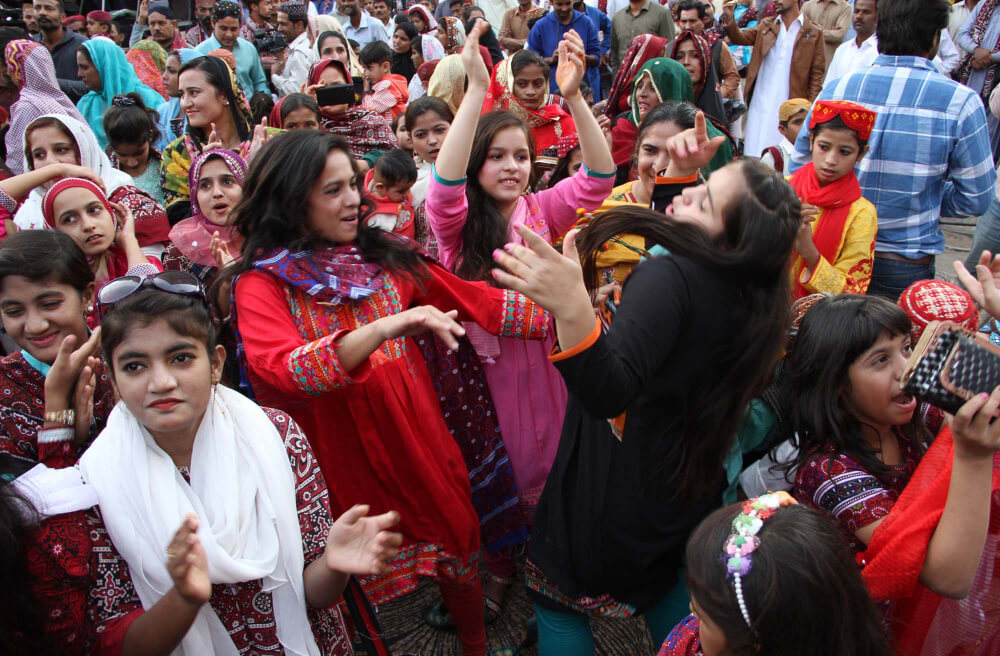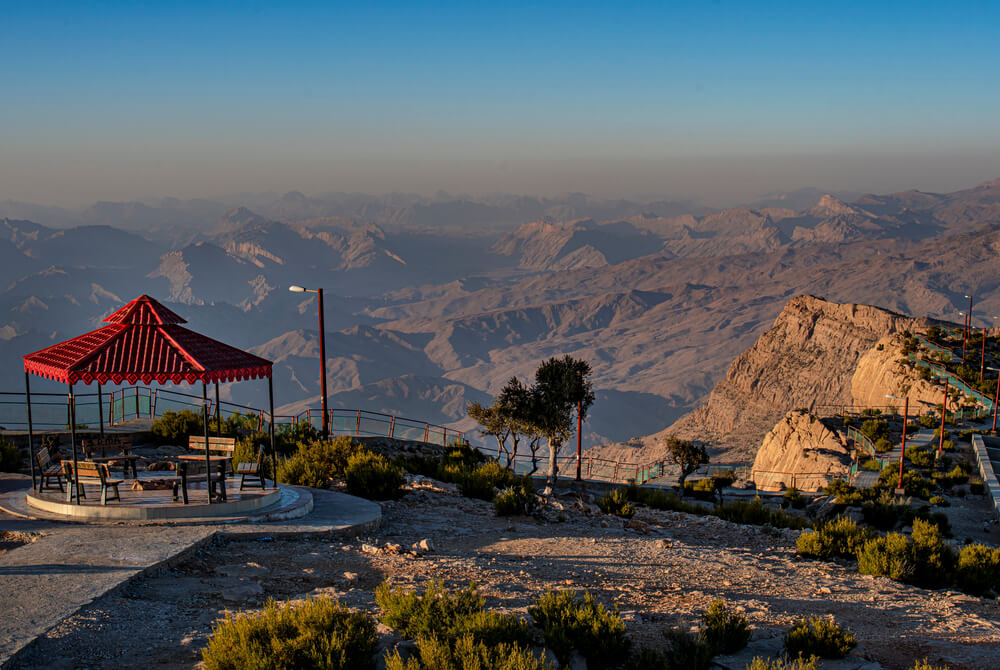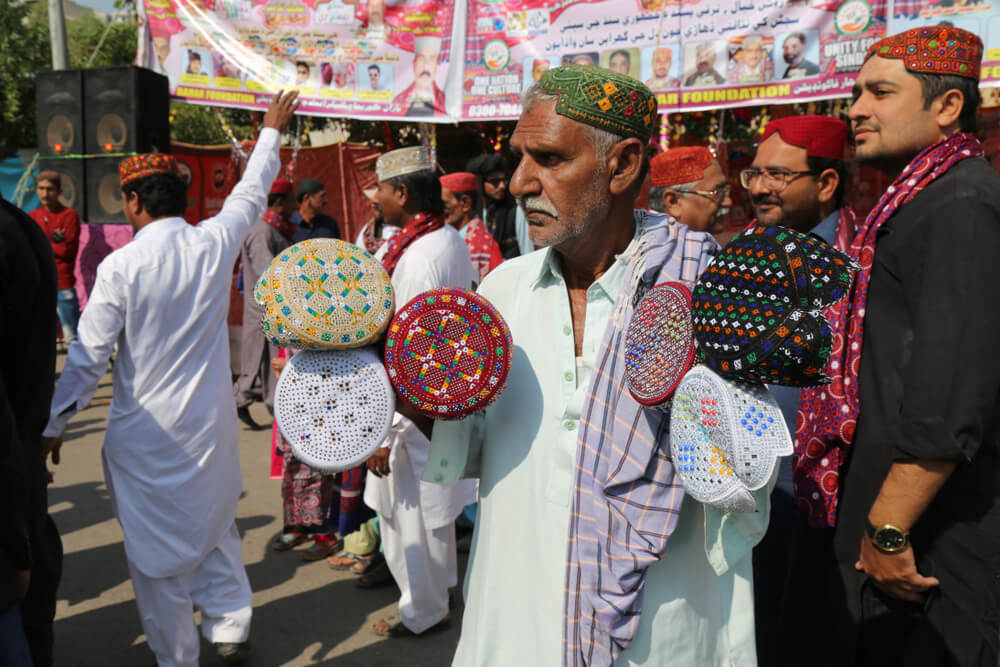Sindhi Culture
The civilization that flourished in the Indus Valley is the ancestor of the Sindhi culture of Pakistan. The primarily arid territory, the available natural resources, and the consistent impact of outsiders have all contributed to the formation of Sindh. In addition, the maritime traditions of people who lived there were supported not only by the Indus or Sindhu River, which runs through the middle of the region, but also by the Arabian Sea, which delineates its limits. The local climate is another factor that contributes to why the Sindhis have such a distinctive language, folklore, traditions, customs, and way of life in comparison to the people that live in the nearby regions. Moreover, the Sindhi people who have emigrated to other countries continue to uphold their heritage and traditions.
Origin of Sindhi Culture
The civilization that flourished in the Indus Valley is the progenitor of the Sindhi culture of Pakistan.
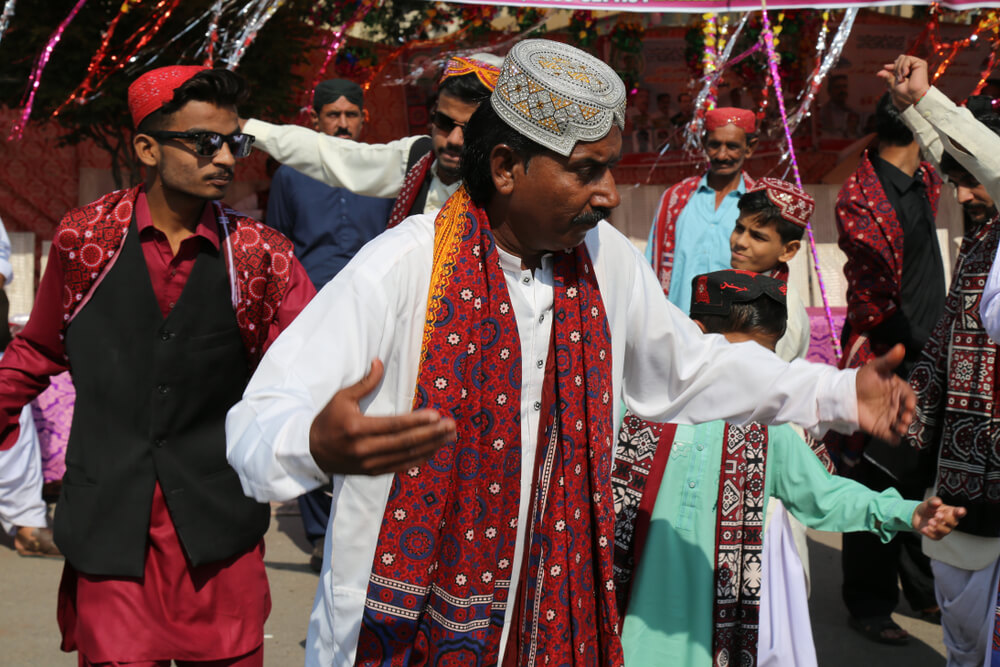
Sindhi Traditions
By wearing an Ajrak and a Sindhi Topi on Sindh Cultural Day, celebrated annually on the 1st Sunday of December worldwide, Sindhis pay tribute to their heritage, traditions, and Art Sindhi Culture. At that time, musical programs and rallies are staged in various places across the country to commemorate the day enthusiastically. To bring attention to the cultural significance of Sindh’s cities and towns, prominent landmarks are often adorned with Sindhi Ajrak. During the many ceremonies throughout Sindh, the locals give one another presents of Ajrak and Topi. Even the children and the women are dressed up in Ajrak when they assemble at the magnificent gathering. Renowned Sindhi singers sing some Sindhi songs at the community gathering, and the melodies portray love and the progression of Sindh. Participants are compelled to dance to Sindhi tunes and songs like “Jeay Sindh Jeay-Sindh Wara Jean” as a result of the musical performances given by the performers.
Sindhi Language
The Sanskrit word Sindhu, the original title of the Indus River, whose delta Sindhi is spoken, is the source of the term “Sindhi.” Sindhi is related to other Indo-Aryan languages through Middle Indo-Aryan and Old Indo-Aryan (Sanskrit). Sindh is a treasure trove of many cultures and values and has long served as the center of civilization and the meeting place of various cultures. Sindh’s historical relative isolation from the remainder of the subcontinent has dramatically influenced its cultural life. The Arabian Gulf in the south and the Indus in the north precluded easy access, while a large expanse of desert to the east and steep terrain to the west served as barriers.
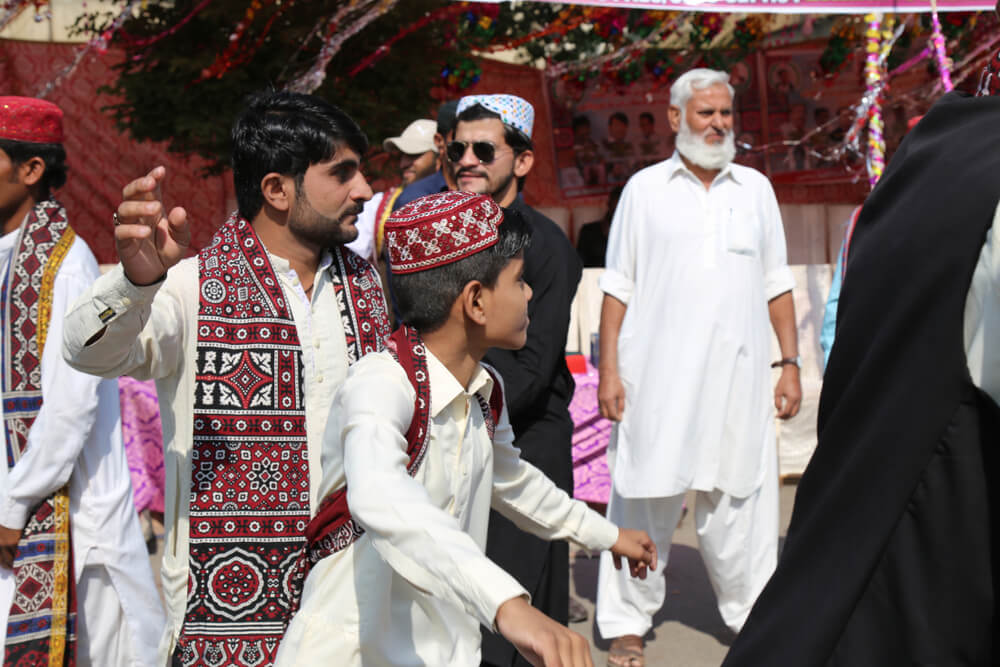
Sindhi was the official language of Sindh before Pakistan was established. The Sindh Assembly of Pakistan has mandated that Sindhi language instruction be provided in all private schools in Sindh. Following the 2005 Rules for Sindh Private Educational Institutes Form B (Regulations and Control, all provincial private schools that use the Matric system, not the Cambridge one, must teach Sindhi.
Sindhi Poetry & Literature
The Sindhi poetry and literature are the writings of the people of Sindh, who live in the lower Indus Valley region of Sind. The Sindhi Mahabharata, recognized from variants in Arabic and Persian, is the first known piece of Sindhi literature. It dates to the ninth or tenth centuries. Sindhi literature mainly comprises rich folklore, including folk ballads, romantic and tragic dastans, myths, and legends. The earliest poets’ works are still in fragments from the 14th century, but the ongoing lyrical legacy starts with the Sufi poems of Qadan Sehwani (who died in 1551) and Shah ‘Abdul Karim Bulri (1528–1623). Shah ‘Abdul Latif Bhitai (1689 or 1690–1752), the finest poet of the classical era, is the author of The Book of the Shah, primarily composed of rewritten versions of dastans and songs from popular folklore. The poet’s Shah ‘Inayatullah Rizwi, Mahdum Diya’uddin Tattawi, and Mahdum Muhammad Hasim were prominent contemporaries.
Traditional Sindhi Dresses
The Shalwar and Kameez, or the Kurta with trousers (Pajama), is a traditional garment for sindhi dress for both ladies and men in Sindh. Women typically dress in Ghagra or Saris. However, before the Shalwar, Kameez, Kurta, Saris, and other clothing items became popular, Sindhis dressed in their unique traditional attire. The people of Sindh wear a variation of Shalwar known as a Suthan and a Kameez known as a Cholo. The Sindhi Ajrakh and Sindhi Topi (cap) are the most prominent and extensively utilized traditional clothing pieces. These garments serve as a symbol of authentic Sindhi culture.
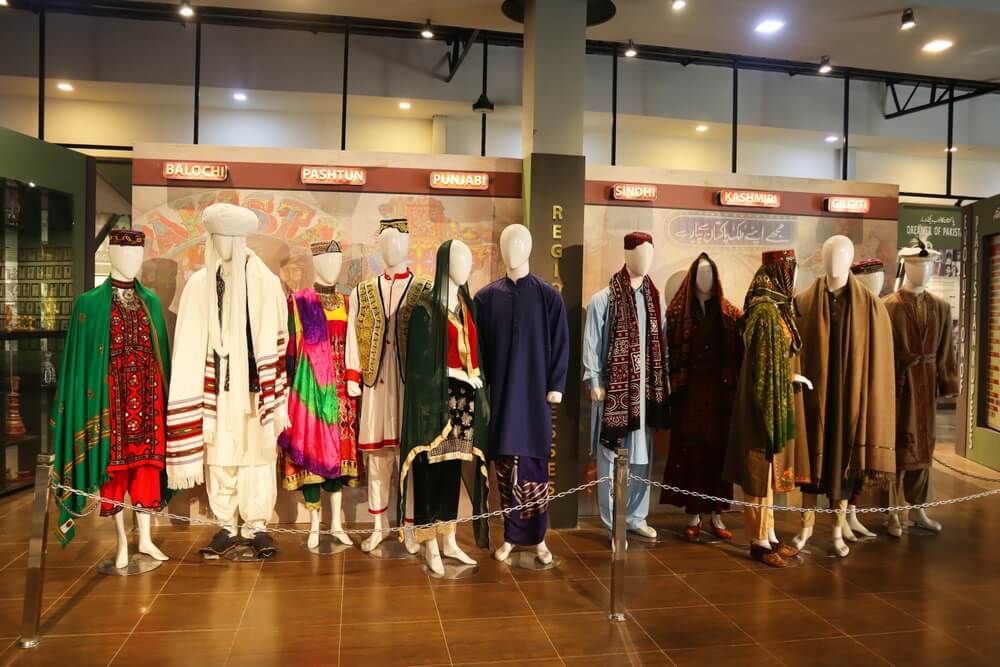
Sindhi Topi
The Sindhi Topi also referred to as the Sindh cap and occasionally referred to as the Sindhi Kufi, is a skullcap worn mostly by Sindhis in the province of Sindh in Pakistan. Hence, it is called the Sindhi Topi. The Sindhi cap, along with the Ajrak or Saraiki Ajrak, is recognized as a vital component of Ajrak Sindhi culture and Balochi culture.
The Sindhi headgear is thought to have been created during the reign of the Kalhoras, but it was popularized under the Talpurs’ rule. In Sindh, it was commonly worn by everyone except religious people who wore the turban. Therefore, it was most widely connected with the more affluent members of Sindhi society, including Sindhi Muslims and Hindus, particularly members of the Amil caste. Along with traditional Ajrak Sindhi Culture, the Sindhi cap is frequently presented or shown to the recipient as a gesture of respect for Sindhi culture. Most hand-woven Sindhi caps are made in Tharparkar, Umerkot, Sanghar, and other districts within the Mirpurkhas division of Sindh. This type of production requires a great deal of manual labor.
Ajrak
Ajrak is the name given to a one-of-a-kind style of block-printed shawls that may be seen in Sindh, Pakistan. These shawls are known as Sindhi Ajrak. These shawls include one-of-a-kind motifs and patterns that are created using a printing technique called block printing. Blue, red, black, yellow, and green are typical hues used when making these designs; however, this list is not exhaustive. Ajraks have evolved into a significant representation of Sindhi heritage and culture.
An Ajrak block print production requires patience, cooperation, and a high talent level. The wooden blocks, the material to be printed on, and the dye are the three primary components of a block-printed fabric. Creating an artistic pattern in a block of teak to be used as a printing block can take up to three days and require the work of five carvers. Printing a design could require as many as thirty blocks to be used by the printers. In addition, it is necessary to have separate blocks for the various colors utilized in a design. It is common for a professional design to contain four or five different hues. The preparation of a single garment for block printing can take up to 8 hours and include the participation of twenty workers, each of whom is responsible for a different duty. The end product can only be one of a kind, given all of this information, and it appears that the printing technique using blocks has been around for centuries and is still popular today.
Kurta and Pyjama
The Shalwar and Kameez, or the Kurta with Pyjama, is the traditional dress for both ladies and men in Sindh.
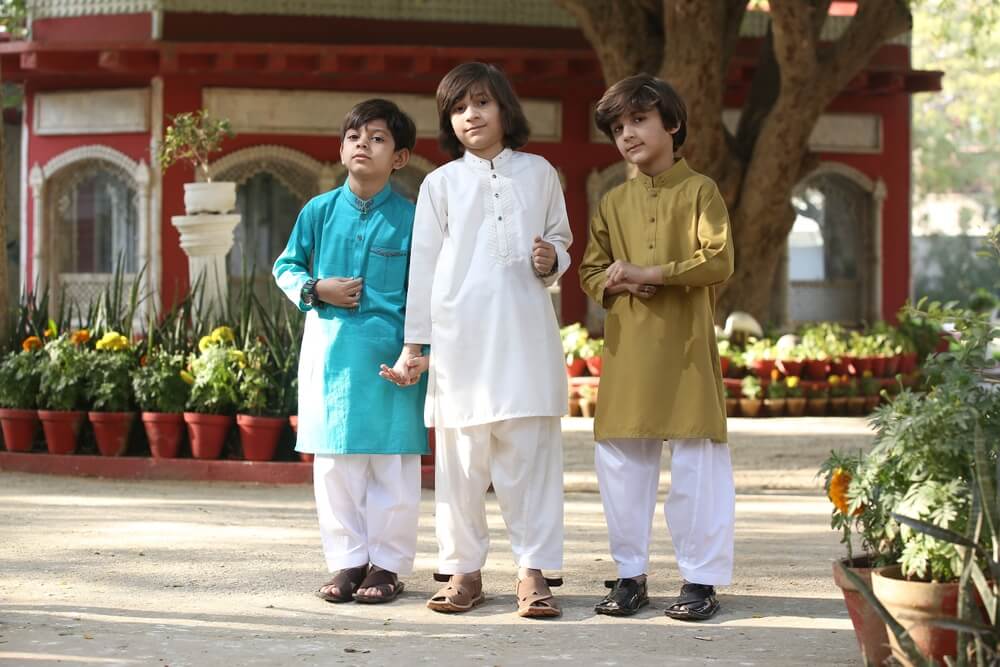
Sindhi LifeStyle
The people of Sindh are strongly attracted to leading lives grounded in agriculture. The residents who farm the land on the lush Indus Plains have access to a substantial source of income as a result of the richness of these plains. Additionally, near the Indus River in Upper Sind, people engage in inland fishing, which creates additional opportunities for the local population. In the arid regions of Thar, people and their animals frequently adopt a nomadic way of life as they travel from location to location in search of potable water supplies. This type of lifestyle is known as itinerancy.
Sindhi Festivals & Events
Sindhis enjoy all the Hindu festivities like Holi, Naag Panchmi, Diwali, Dashera, Ram Navmi, Janmashtmi, and Raksha Bandhan; these are some of the festivals that are special to the Sindhi community and are observed by Sindhis all over the world. Moreover, the moon’s progression determines Sindhi holidays and other significant days. Therefore, the Sindhi Calendar is sometimes referred to as the Lunar calendar. Following are Sindhi festivals and events.
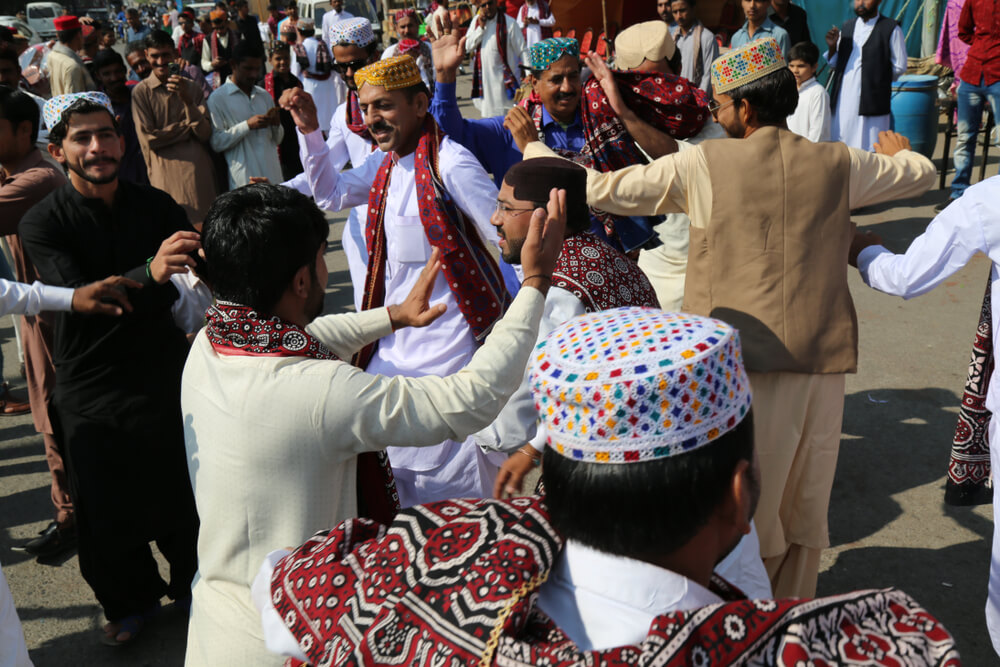
• 13-Jan – Lal Loi (Fixed date every year)
• Chaliha Sahib – (40 Days Fast of Jhulelal Sain)
• Nandi Thadhri
• Mahashivratri
• Mahalakshmi’a Jaa Sagra
• Akhan Teej
• Cheti Chand / Sindhi New Year
• Holi/Dhuriyo
• Dasehra
• Raksha Bandhan
• Dhan Teras
• Naag Panchmi / Goghro
• Diwali / Diyari
Sindhi Culture Day
A well-known Sindhi cultural celebration, Sindhi Cultural Day is often called “Aekta Jo Dihaarro,” which translates to “the day of togetherness.” It is celebrated with the usual zeal and enthusiasm of previous generations to promote the centuries-old cultural heritage of Sindh. This day is commemorated across the entire province of Sindh and among the Sindhi diaspora population in various parts of the world. The harmonious identity of the Sindhi culture of Pakistan is celebrated on this day by Sindhis as a way to attract attention from the rest of the world to their rich legacy and demonstrate that identity.
The first-ever celebration of Sindh Culture Day occurred on December 9, 2009. Then, it was known as Sindhi Topi Day (the Sindhi topi, or Sindhi cap, a round hat with embroidered geometrical designs). The cultural day demonstrates solidarity among the masses of Sindhi speakers; the event is celebrated in the entire province of Sindh and worldwide. On December 6, 2009, the day honoring culture and history was observed for the very first time.
Sindhi Cultural Food
On special events, foods such as Diwali are given, when a Bhaji (Vege dishes) called Chiti-Kuni is prepared with seven different vegetables. Also, when someone fully recovers from a significant sickness, it’s customary to make a tribute and serve “Mitho Lolo,” a sweet flatbread baked on a pan and seasoned with ground cardamom. The dough is made of wheat blended with oil (or butter/ghee) and sugar syrup. White steamed rice is eaten with spinach curry that has been given a “Tarka” with tomato, onion, and garlic in the Sindhi cuisine known as “Sai Bhaji Chawal.” Another widely-liked wheat-flour flatbread from Sindh, Koki Pairs nicely with any Dal, Sabzi, Yogurt, or Chai. Muslim Sindhis serve Seviyan (Vermicelli) as a famous sweetened (and occasionally milk-based) dessert during Bakra-Eid and Eid ul-Fitr. In addition, on significant religious festivals, Mitho Lolo and milk are distributed to the underprivileged.
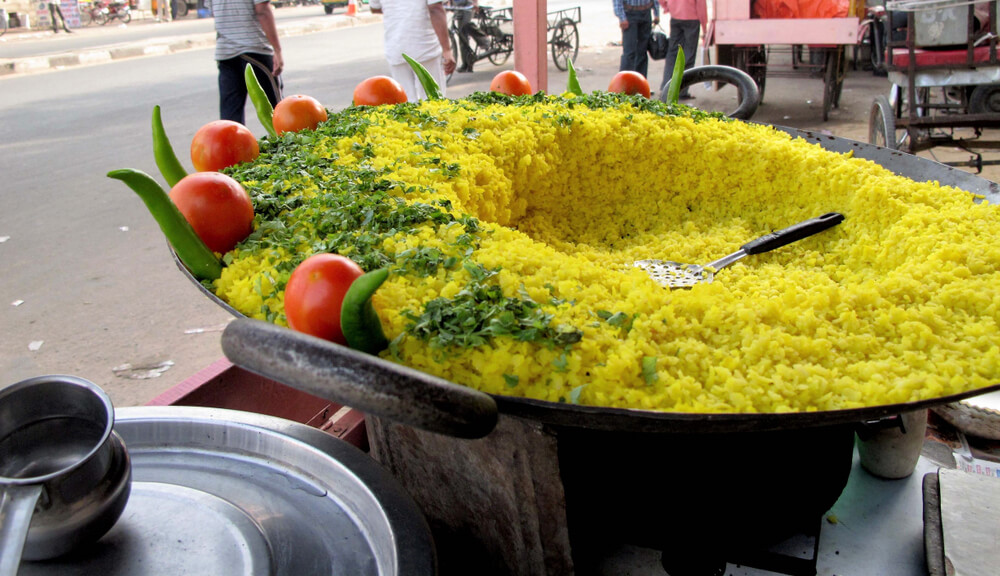
Hilsha fish is prepared using various culinary techniques to create Pallo Machi, a beloved Sindhi delicacy. It can be grilled, deep-fried with regional spices added, or boiled with potatoes and onions for a classic fish dish. In addition, the fish frequently contains Roe, known in Sindhi as “Aani,” and is eaten as a delicacy with fish fillets and often fried alongside the palla.
Sindhi Sufi Music
It has always existed as a place filled with unique cultural and esthetic qualities, tranquility, love, and romance. The eminent philosophers of the Naqsh Bandi order in Thatta were responsible for translating the core concepts of Islam into their native dialect. There were outstanding Sufi (mystic) artists like Shah Abdul Latif Bhitai, who cherished truth and devoted his entire life to spreading it and seeking it out. Bhitai was a talented musician as well. He created a brand-new musical instrument called the Tambura (also known as the drone), which is still the primary musical instrument in rural Sindh. Shah’s use of traditional Indian rag and Sindhi folk melodies and music enhances the brilliance of his lyrics.
FAQs
What is famous about Sindhi culture?
Art Sindhi culture is known for its dancing, music, and arts. Sindhis are utterly devoted to their homeland, culture, and nation.
What type of people are Sindhis?
Sindhis are an Indo-Aryan ethnic tribe originating in Pakistan’s Sindh and Balochistan provinces and speaking the Sindhi language.
How do Sindhi people live?
Sindhi people live a simple life full of culture and tradition. They follow their culture from birth till death.
Who is the father of Sindhi poetry?
Qazi Qadan was the 1st Sindhi Sufi artist from Sindh in what is now Pakistan. His birthplace is the Bakhar Samma Dynasty, located in the city of Sukkur in Sindh today. Qazi Qadan died in 1551. Additionally, he is referred to as the Father of Sindhi Poetry.
What do Sindhis believe in?
The Sindhi people of Pakistan are monotheists, whereas the Sindhi people of India are polytheists.
Conclusion
Culture can be defined as a manner of going about one’s daily life that reveals the qualities and knowledge of a particular group of people, civilization, or nation. Language, clothing, what we wear and dress, cuisine, cooking, spirituality, entertainment, art, farming, the rituals of daily life, weddings, how to welcome guests, and other social habits are all included in this category. High culture is characterized by exceptional taste in fields such as the fine arts and the humanities. It is a coherent structure that incorporates human knowledge, perception, and action. Sindh is the southernmost province of Pakistan and takes its name from one of the major rivers that flow across the country, the Indus. Sindh was chosen for this province because it derives from the Sanskrit word Sindhu, which could be translated as “an ocean.”
The Indus Valley Civilization, which flourished throughout the Bronze Age and was later urbanized by Dravidian cultures about 3000 B.C., has left a profound imprint on this region. As a result, the province of Sindh is home to a substantial portion of the arid region and a wealth of natural resources. The Sindhi people, who are spread out across Pakistan, India, and the diaspora, are the ones who keep the Art of Sindhi culture alive and keep it alive. The handicraft products considered part of the Sindhi people’s traditional arts and crafts include things like the Ajrak, Crucial work, articles made of date leaves, Farsi Rugs, Jandi, Khes, Caps, and Woodcarving, Bangles, Embroideries, Ceramics, Kashi, Rilli, and Thari carpets. Their long and storied past endowed them with enduring rituals and customs, rich folklore, a distinctive way of life, and their language, Sindhi. A few years ago, the people of Sindh started commemorating the 1st Sunday of December as Sindhi Cultural Day to honor the province of Sindh’s diverse cultural heritage. During this time, Sindhi people show their support for one another by gathering with their dresses and friends, wearing traditional clothing, and eating traditional meals.

